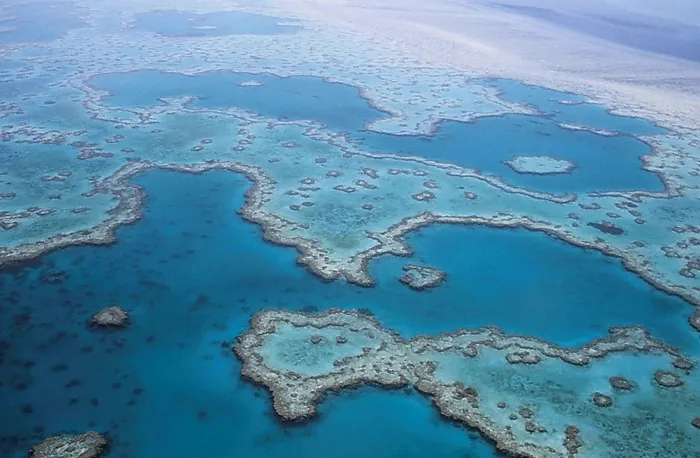LOOK: Highest coral cover in 36 years seen in parts of the Great Barrier Reef

Australia’s Great Barrier Reef. Picture: Frauke Feind Pixabay
The central and northern parts of Australia’s Great Barrier Reef are showing the highest coral cover seen in more than 36 years, promising evidence that the fragile Unesco World Heritage Site could still recover from decades of damage, an environmental monitoring group reported.
However, coral cover on the country’s southern coast has seen a significant decrease due to common bleaching events caused by warming waters.
CBS reported last week that there was an increase in average hard coral cover in the northern region of the reef to 36% in 2022 from 27% in 2021, and an increase in the central region to 33% in 2022 from 27% in 2021, the Australian Institute of Marine Science (AIMS) said in its annual summary report.
Despite this, “a third of the gain in coral cover we recorded in the south in 2020/21 was lost last year due to ongoing crown-of-thorns starfish outbreaks,” said Dr Paul Hardisty, the CEO of AIMS.
“This shows how vulnerable the reef is to the continued acute and severe disturbances that are occurring more often and are longer-lasting.”
Having monitored the Great Barrier Reef for nearly four decades, since 1986, AIMS said that the increase in the frequency of mass bleaching events – with coral, in response to stressful conditions like heat, losing its pigments and symbiotic algae turning white and potentially dying – were “uncharted territory”.
“In our 36 years of monitoring the condition of the Great Barrier Reef, we have not seen bleaching events so close together,” Hardisty said.
“Every summer, the reef is at risk of temperature stress, bleaching and potentially mortality, and our understanding of how the ecosystem responds to that is still developing.”
Dr Mike Emslie, also from the AIMS monitoring programme, said that most of the coral growth in the north and central parts of the reef was driven by fast-growing but fragile Acropora corals, and could therefore be reversed quickly.
“These corals are particularly vulnerable to wave damage, like that generated by strong winds and tropical cyclones,” Emslie said.
“The increasing frequency of warming ocean temperatures and the extent of mass bleaching events highlights the critical threat climate change poses to all reefs, particularly while crown-of-thorns starfish outbreaks and tropical cyclones are also occurring. Future disturbances can reverse the observed recovery in a short amount of time.”
Current Affairs